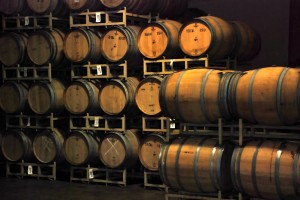 Last week a group of students and I addressed the topic of “The Impact of Wood Usage in Wine Storage and Maturation.”
Last week a group of students and I addressed the topic of “The Impact of Wood Usage in Wine Storage and Maturation.”
You, as they, would probably also have been yawning as the first PowerPoint slide was projected onto the screen. (Did I mention it was late afternoon on a Friday?) But the class delved into the discussion.
We like to think of wood aged wine as spending its days and nights nestled in dark cellars slowly evolving inside expensive oak barrels, eventually revealing its complex and nuanced character. That scenario is most likely not the case if the wine you are buying costs $12 or less. This is not to say that you will not find wood aromas and tastes in lower-priced wines; it only means you are experiencing a “wood usage option.”
The use of alternative techniques originated in Australia, a leader in revolutionary winemaking techniques. Australians tend to take a pragmatic approach to their craft – for instance, the use of mechanical harvesters in the place of hand harvesting to efficiently grow and harvest more grapes. The simple solution: Put a tractor in the field rather than a picking crew.
Want to soften, add texture and stabilize the tannin in wines? Take a shortcut; throw a few oak chips into the vat. As with Australia’s many other down-to-earth solutions, this method not only costs less on the winery’s end; the savings trickle down to the consumer by offering the flavor and characteristics of wood at a fraction of the price.
These techniques for imparting wood influence without the expensive barrels include the use of oak staves lowered into the vat or large bags filled with oak chips dipped into the vat, much like a tea bag. A final alternative, which few winemakers use (and is illegal in most countries), is pouring a liquid essence with oak flavor into the vat.
Is this modernized technique a benefit to the wine consumer or another process making the romance of winemaking a thing of the past? There is no easy answer. I love rich, buttery $50 chardonnays that have fermented in expensive oak barrels, but certainly enjoy the simple, clean $10 bottles using alternative methods for my wines.
Perhaps this is a question where the exploration is more fun than finding the answer.
THE VALUES
- 2011 Penfolds Rawson Retreat Chardonnay, Australia (about $12 retail)
- 2011 Yalumba Y SeriesChardonnay, Australia (about $12 retail)
THE SPLURGES
- 2009 Rombauer Carneros Chardonnay, California (about $49 retail)
- 2009 Cambria Katherine’s Vineyard Chardonnay, California (about $32 retail)